To install a solar water heater, start by evaluating your solar potential. Examine your roof's orientation, check for obstructions, and consider your local climate. Next, choose and mount the components. Select the appropriate collector type, storage tank, and decide on ground or roof mounting. Position the collectors facing south for ideal performance. Finally, connect and test the system. Install the necessary pipes, pump, and controller, then check for leaks and proper functionality. Don't forget to test safety features and adjust settings. By following these steps, you'll be on your way to harnessing the sun's power for your hot water needs.
Assess Your Solar Potential
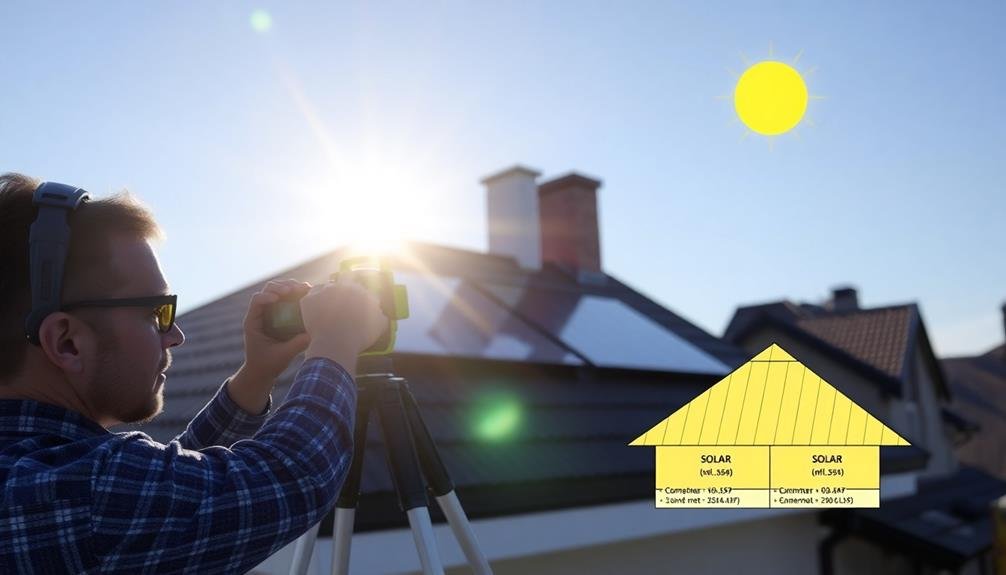
Before diving into solar water heater installation, you'll need to evaluate your home's solar potential. Start by reviewing your roof's orientation and angle. Ideally, your roof should face south and have a pitch between 15 and 40 degrees for ideal sun exposure.
Next, consider any obstructions that might cast shadows on your roof, such as tall trees or nearby buildings. These can greatly reduce your system's efficiency.
Examine your roof's condition and structural integrity. It should be able to support the weight of the solar panels and mounting equipment. If your roof needs repairs or replacement soon, it's best to address these issues before installation.
Calculate your household's hot water consumption to determine the appropriate system size. Factor in the number of occupants, daily routines, and appliances that use hot water. This information will help you choose the right capacity for your solar water heater.
Consider your local climate and average sunlight hours throughout the year. While solar water heaters can work in various climates, their efficiency may vary depending on seasonal changes and weather patterns.
Consult local solar installation experts or use online solar calculators to get a more accurate evaluation of your home's solar potential.
Choose and Mount Components
Once you've assessed your solar potential, it's time to select and install the components of your solar water heater. Start by choosing the right type of collector: flat-plate or evacuated tube. Flat-plate collectors are more common and cost-effective, while evacuated tube collectors are more efficient in colder climates.
Next, select a storage tank that matches your household's hot water needs.
For mounting, you'll need to decide between a ground-mounted or roof-mounted system. Roof mounts are more common for residential installations, but verify your roof can support the additional weight. Install a sturdy mounting frame that can withstand local wind conditions.
Position the collectors facing south (in the Northern Hemisphere) at an angle equal to your latitude for ideal year-round performance.
Don't forget to include essential components like the heat exchanger, pump, and controller. The heat exchanger transfers heat from the collector fluid to your household water supply. A circulation pump moves the fluid through the system, while the controller regulates the pump's operation based on temperature differentials.
Connect and Test System
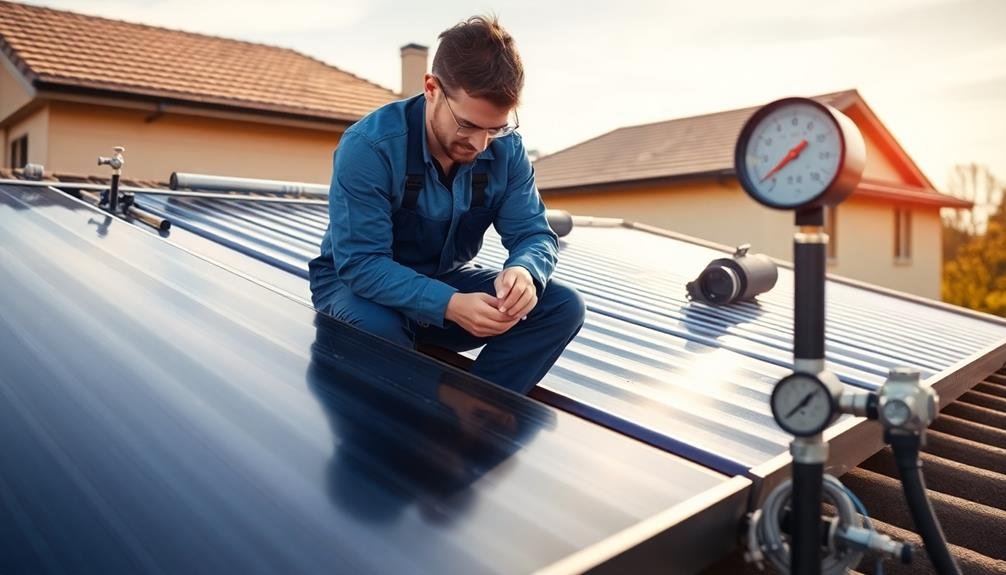
The next essential step in installing your solar water heater is connecting and testing the system. Begin by connecting the solar collectors to the storage tank using insulated copper pipes. Verify all connections are watertight and properly sealed. Install valves at key points to control water flow and allow for system maintenance.
Next, connect the pump to the system, confirming it's positioned correctly to circulate water through the collectors. Install temperature sensors on the collector and storage tank, then connect them to the controller. Wire the pump and controller to your home's electrical system, following local codes and regulations.
Once all components are connected, it's time to test the system. Fill the storage tank with water and check for leaks. Activate the pump and controller, verifying that water circulates properly through the collectors. Monitor temperatures to confirm the system is heating water effectively.
Test all safety features, including pressure relief valves and freeze protection mechanisms. Finally, adjust the controller settings for peak performance based on your local climate and hot water needs.
If you encounter any issues during testing, consult the manufacturer's troubleshooting guide or seek professional assistance.
Frequently Asked Questions
How Long Does a Solar Water Heater Typically Last?
You'll be pleased to know that solar water heaters typically last 15-20 years. With proper maintenance, they can even exceed this lifespan. You'll enjoy long-term energy savings and eco-friendly hot water for nearly two decades.
Can Solar Water Heaters Work in Cold Climates?
Yes, solar water heaters can work in cold climates. You'll need a freeze-protected system with antifreeze fluid or a drain-back design. They're less efficient in winter, but they'll still help reduce your energy costs year-round.
What Maintenance Is Required for a Solar Water Heating System?
You'll need to regularly clean the collector panels, check for leaks, and inspect the system's components. It's important to flush the tank annually and guarantee proper insulation. Don't forget to monitor antifreeze levels in cold climates.
How Much Money Can I Save With a Solar Water Heater?
You can save considerably with a solar water heater. Depending on your location and energy usage, you'll typically cut your water heating costs by 50-80%. That's hundreds of dollars annually, with savings increasing over time.
Are There Any Government Incentives for Installing Solar Water Heaters?
Yes, you'll find various government incentives for solar water heaters. You can benefit from federal tax credits, state rebates, and local utility incentives. Check with your state's energy office or the Database of State Incentives for Renewables & Efficiency.
In Summary
You've now learned the key steps to install a solar water heater. Remember to carefully assess your home's solar potential, select the right components, and mount them securely. Don't forget to connect everything properly and test the system thoroughly. With your new solar water heater in place, you'll be saving energy and reducing your carbon footprint. Enjoy the benefits of sustainable hot water for years to come!

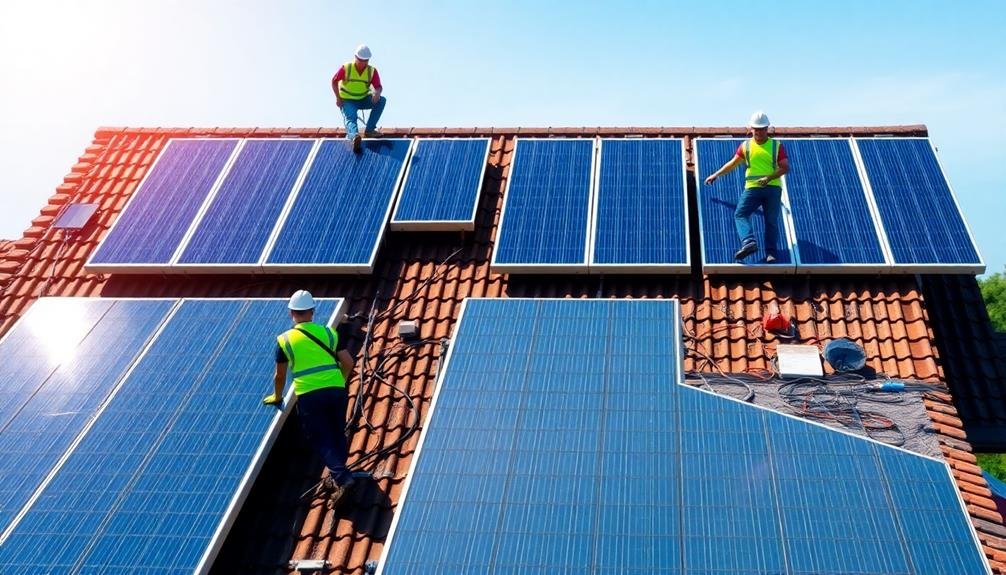
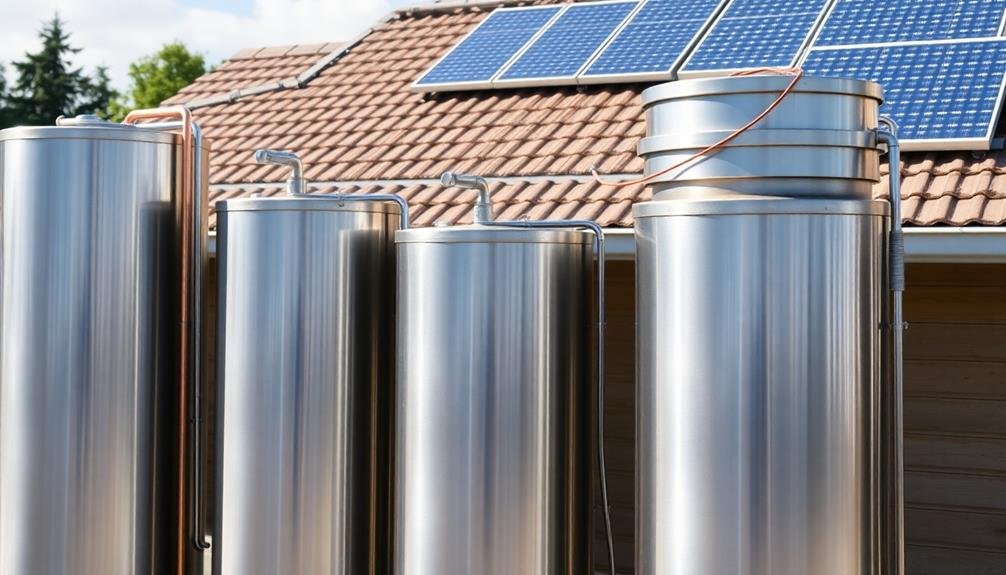
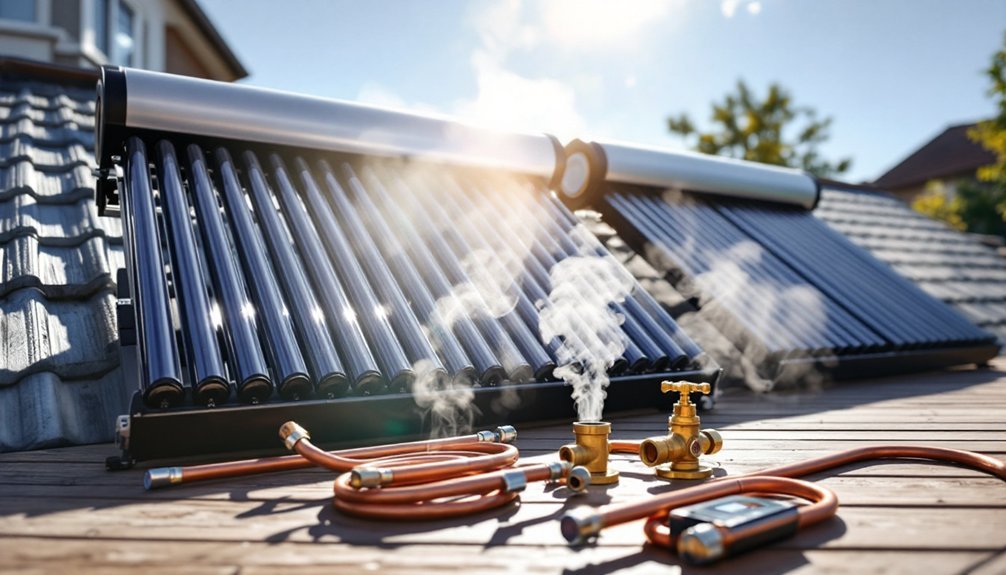
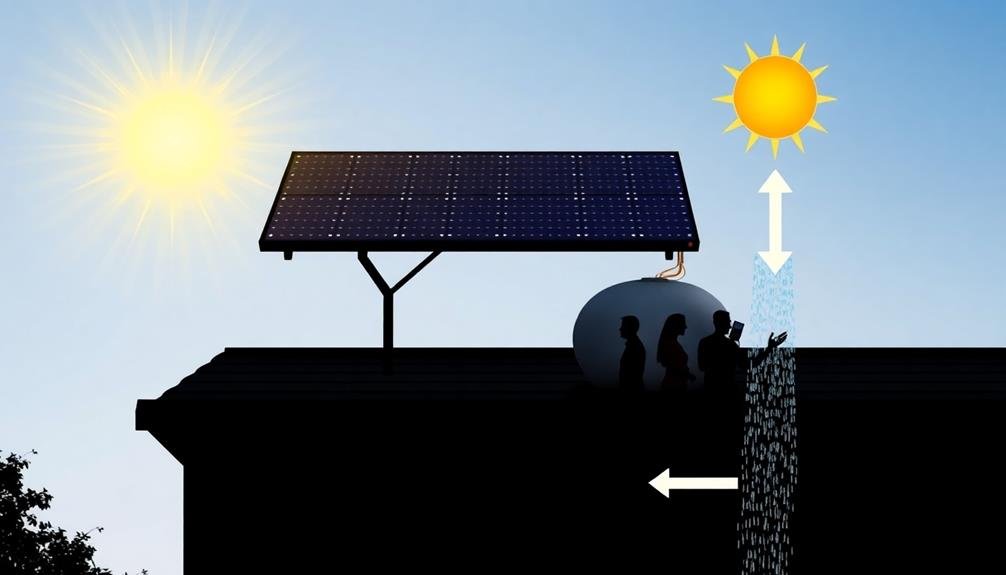
Leave a Reply